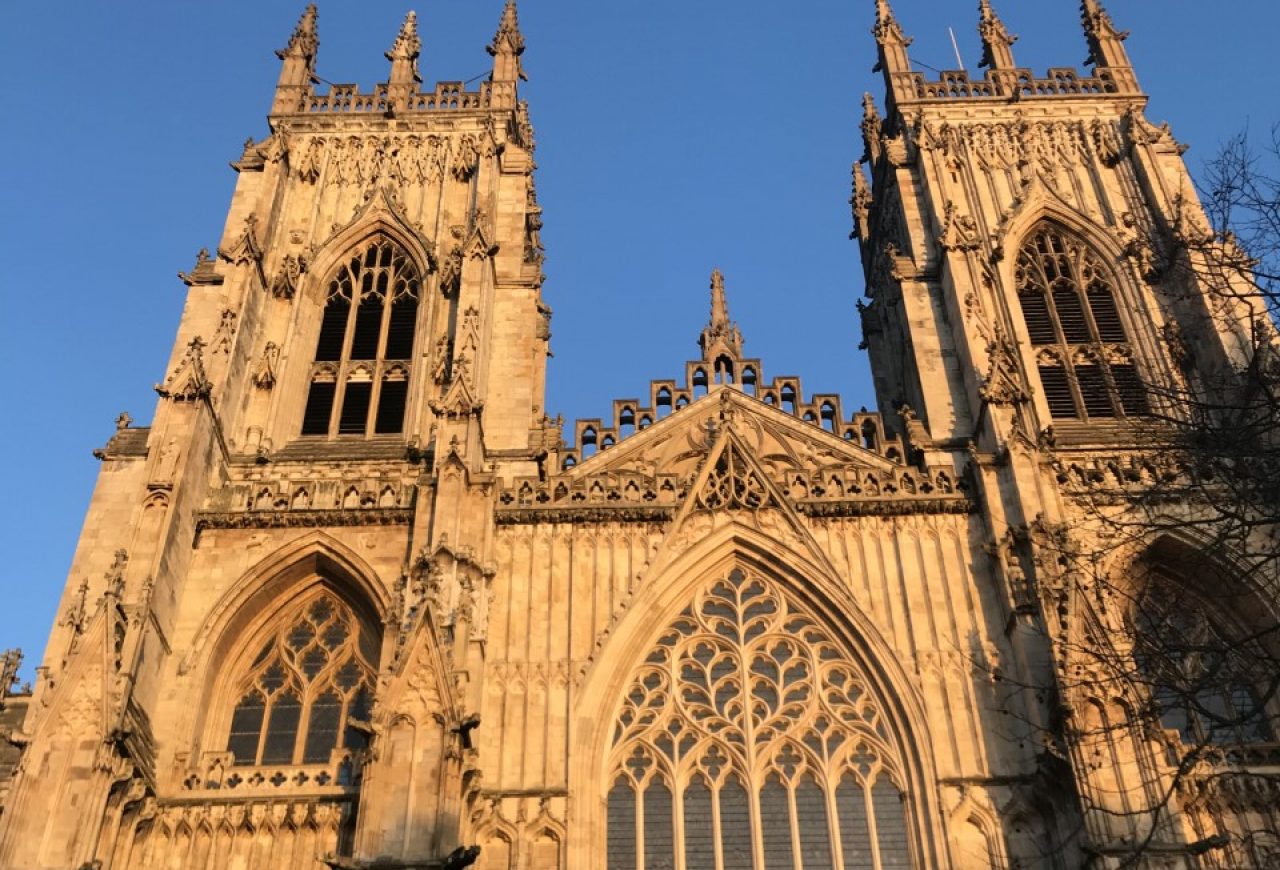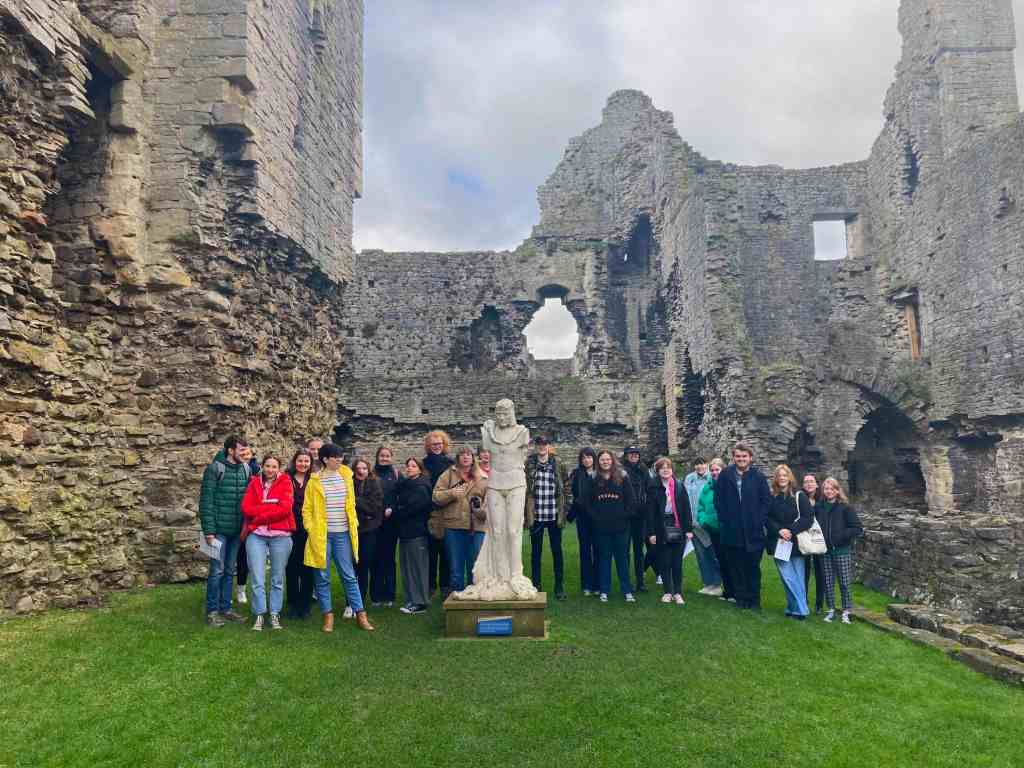Beyond the awesome scale of the medieval castle, these buildings have a rich story to tell about the families that lived there and the communities around them. Taking a second glance at the physical remains is always rewarding, as Leah Goddard found when visiting Middleham and Richmond Castles for the module The Visible Past.
Over the course of a few weeks on the Visible Past module, we have been considering how castle studies and scholarship have favoured particular narratives over others when considering the subjects of their investigation. Our class trip to Middleham Castle and Richmond Castle helped not only to solidify that which we had been discussing as a group, but to demonstrate this ideological favouritism up close.
We began the day at Middleham Castle. I was immediately struck by its sheer size and magnitude, and how it dominates the surrounding town’s landscape. Upon entering the castle grounds, we were confronted with a statue of Richard III, in commemoration of his time spent at Middleham. We soon came to learn, however, that Richard’s involvement with Middleham was not as great as the statue might suggest. It was, in fact, the Neville family who inherited the castle and began re-building in the 13th century that was at the heart of much of the structure and its impressive development. Evidence could be seen in the overall layout of Middleham how certain areas were used as living quarters for visitors, staff, and the ever-growing Neville family; private space that indicated a need for this privacy, yet still closely connected to castle activity. A viewing of the structure in its entirety demonstrated to us how Middleham Castle was, as much as anything else, a family home.

Richmond Castle was our next stop for the day and, as at Middleham, the presence of the site was slightly overwhelming. However, I came to understand the reasons for this as not only was the town of Richmond situated outside the structure, but also within. Once walking through to the enclosure of the castle, this was an idea I could certainly visualize, and was described to us as an ‘area of opportunity’. Whilst Richmond certainly had its military uses, particularly in the Victorian era, intentional choices in the structure to connect all elements of the space stood out to me. Particularly, having the chapel perfectly in between the keep and living quarters, and as an easily accessed space, can help to demonstrate the importance of religious practice to the everyday. A walk through the gardens also prompted interesting discussions with my particular walking group as to how these spaces, natural or constructed spaces such as the chapel, could further our ideas on the daily lives and routines at Richmond.

What interested me the most about both Middleham and Richmond was their importance as domestic spaces and family homes. There is a misconception from many (myself included, until learning more on this module) that castles are purely military spaces designed for protection against siege. Where in truth, castles are multi-purpose structures designed for everyday use as well as military prowess. I found it a shame to understand how this misrepresentation came to be, and consider the lived experiences of those who inherited, resided in, or worked within these spaces as almost fleeting in favour of a supposedly grander story.

This misconception is challenged within both of these sites and others like it; choices made in the layouts and floor plans of a space can reveal just as much as the structure’s materials or preservation. And as a group we were consistently challenged to rethink our pre-conceptions, what we saw before us, and the intentions behind the structures we were engaging with. I felt that I had left this experience with a further interest in heritage and the presentation of history, as well as a knowledge of how close inspection and consideration of the visible past can reveal much more than thought at first glance.
















